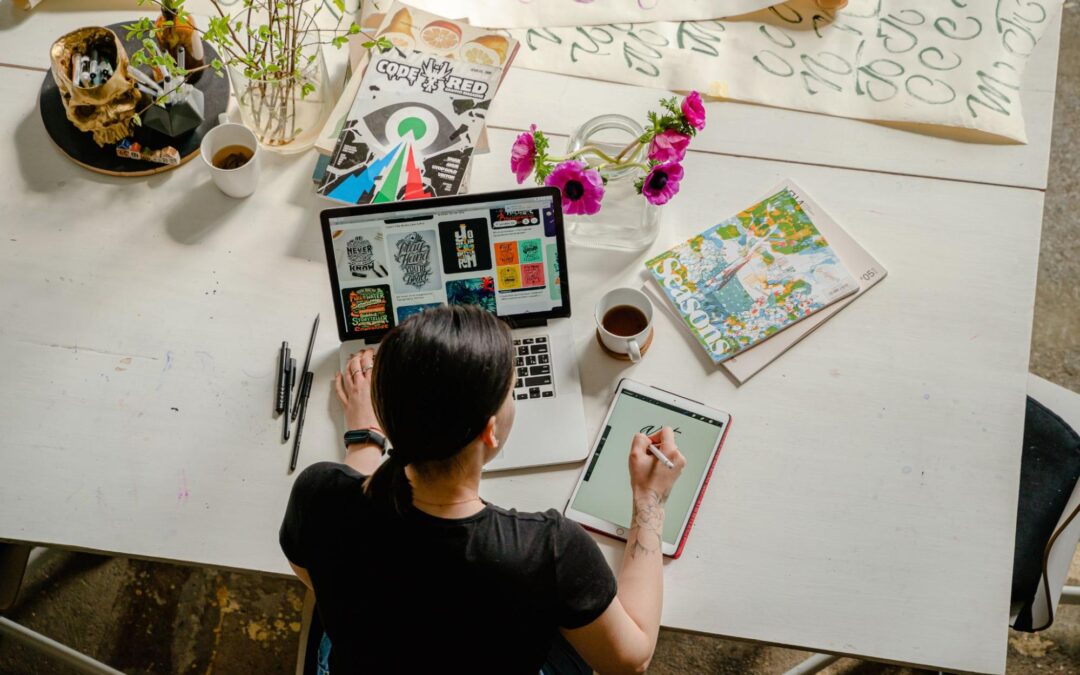You can witness how art and technology redefine and reshape our world. Pushing our understanding of reality to its limits, we reimagine what we consider as solid ground. Inventions and experiments introduce a new sphere with fresh rules, influencing both our minds and bodies, language, and the entire world. Technology in art challenges our perception, inviting us to embrace creativity and science. As we recognize that creative production reflects our current time, how do we grasp the increasing number of young contemporary authors who focus on presenting immaterial and ephemeral concepts?
Traditional paintings and sculptures cannot capture the technological essence to the fullest extent. Therefore, contemporary creatives now embrace fresh materials such as data, pixels, mathematical formulas, and engineering tools. Where is the intersection of art and technology, and what is the impact of technology on the future of art?
Art That Would Be Impossible Without Technology
No matter what you think about the relationship between art and technology, it’s a fact that technology fulfills the desires of young aspiring authors. It offers unexplored territory to discover and create something completely their own. It allows them to break away from tradition, pushing the boundaries and opening up new possibilities. This has been evident since the early days of technology.
For instance, the invention of the lantern influenced luminism, color tubes enabled plein-air painting and later led to impressionism, and Joseph Nicephore Niepce’s primitive photography has influenced creativity for over two centuries. Many contemporary authors have chosen to reject traditional tools like brushes and chisels, bravely venturing into the unknown and experimenting with original techniques that were unimaginable just a few decades ago.
#1 Artistic Chemistry
Kim Keever takes the lead as we begin our list of modern authors who rely on technology. This American author has developed a unique approach, reminiscent of Jackson Pollock, by pouring paint into a 200-gallon fish tank. The resulting chemical reactions create breathtaking visual effects captured through photography. Prepare to be both mesmerized and intrigued by Keever’s work as you question the medium before your eyes.
#2 AI Art
AI holds immense potential to revolutionize the art industry, transforming not just the process of creating and experiencing art but also the way artists collaborate. Embracing AI as a tool allows you to expedite and streamline art creation, enabling you to channel your energy toward harnessing your creativity and fostering innovation.
Moreover, AI serves as a gateway to uncharted realms of inspiration, unearthing fresh, unconventional perspectives that elude human imagination alone. By facilitating collaboration between artists and machines, AI injects unparalleled diversity and originality into artistic creations while concurrently optimizing and refining the artistic journey.
AI’s impact on art has not yet been fully studied, and to a large extent, we can only guess what it will lead to. At least the best visual experience is guaranteed. However, AI may also be a source of digital threats that encourage people to switch to Tor. However, many people underestimate Tor’s risks or are not aware of them at all. You should look into this further, it may be better to use VeePN in combination with any browser than Tor.
#3 Robotics
Yuri Suzuki, a Japanese designer, heavily relies on science in his creative pursuits. He has gained fame for collaborating with Will.I.Am, particularly for Pyramidi.

Pyramid is a remarkable artwork composed of three robotic instruments that deconstruct a piano, guitar, and drum. The engineering skill required to create Pyramid alone is impressive, yet Suzuki takes it a step further by infusing it with artistic brilliance.
#4 Explosions
Cai Guo-Qiang, a Chinese author, takes experimentation with gunpowder and its modern variations to an extreme level. He initiates ignition events, where controlled explosions leave behind images burned into the surface. Cai Guo-Qiang also combines engineering and science elements in installations and performances to achieve desired effects.
#5 Papers and Lasers
By manipulating chemistry, Kim Keever learned valuable skills during his NASA experiences and scientific background. Similarly, Eric Standley, who grew up in an engineer-filled household, also acquired this ability to some extent. With the use of lasers, Standley expands the traditional boundaries of paper-cut artworks, shredding over 250 sheets of archival paper. What makes his production truly remarkable is the intricacy and miniature scale of each piece, boasting an impressive level of detail.
#6 Computer Drawings and Paintings
Let’s give credit to creative practitioners who have chosen to focus on pure visuals and captivating aesthetics rather than basing their digital efforts on conceptual theories. These artists stand out for the beauty of their animation pieces. Bobby Chiu, Cristiano Siqueira, Daniel Conway, Cris de Lara, and Tae Young Choi are worth mentioning in this regard.
#7 Combining Traditional and Modern
Michael Manning earns a spot in this article because of his playful artwork. He starts each of his works with a computer program, mimicking the experience of using oil paint and printing them to imitate real acrylic brush strokes. Manning explores the connection between technology and analog through his practice in painting, video, sculpture, and computer-based work.
Conclusion
After reading all the information above, it’s clear that technology is changing art in innovative and sometimes unusual ways. Like any other art form, opinions are divided on whether the influence of science on creativity is a positive or negative moment in art history. When this topic comes up, many people criticize the approach, arguing that technology breaks the bond between the artist and the artwork, making the process of creating art easier and less meaningful. However, this is completely false.

First and foremost, as long as artists remain creative and imaginative, there is no need to worry. Additionally, art doesn’t have to be complex or difficult to be remarkable—just think of Malevich or Duchamp. In fact, modern art proves that the idea behind a piece is more important than its complexity or aesthetics. It’s all about the experience the artist delivers to the audience, challenging their thoughts, feelings, and perspectives or simply provoking them.

